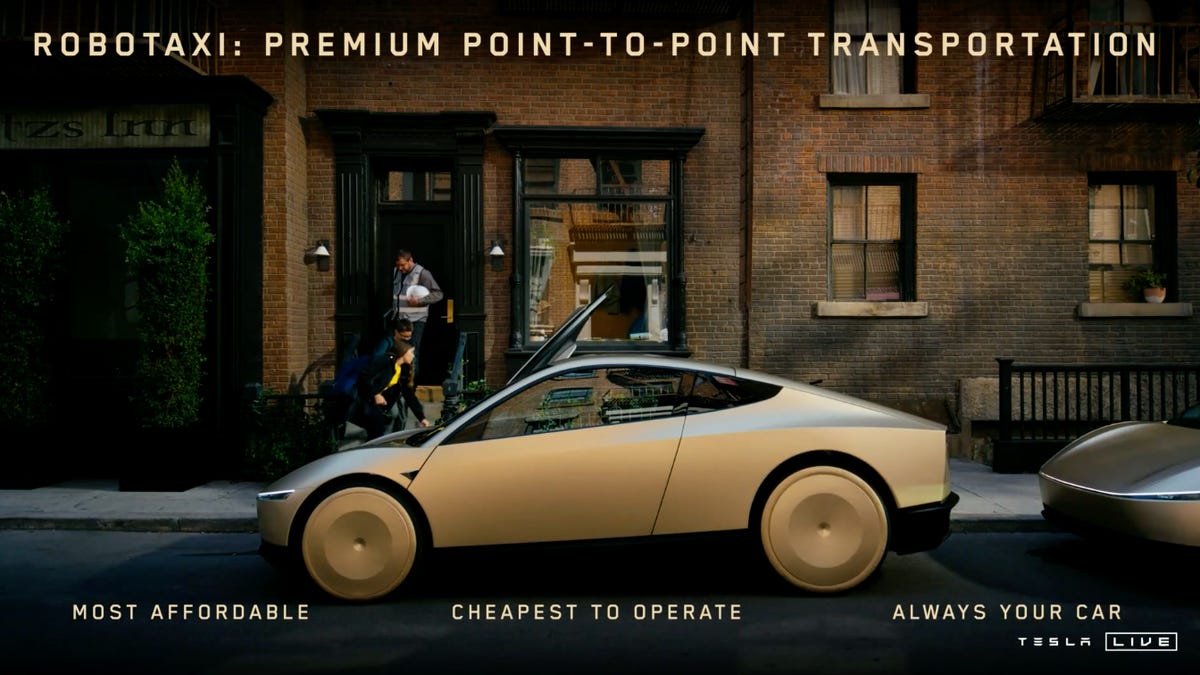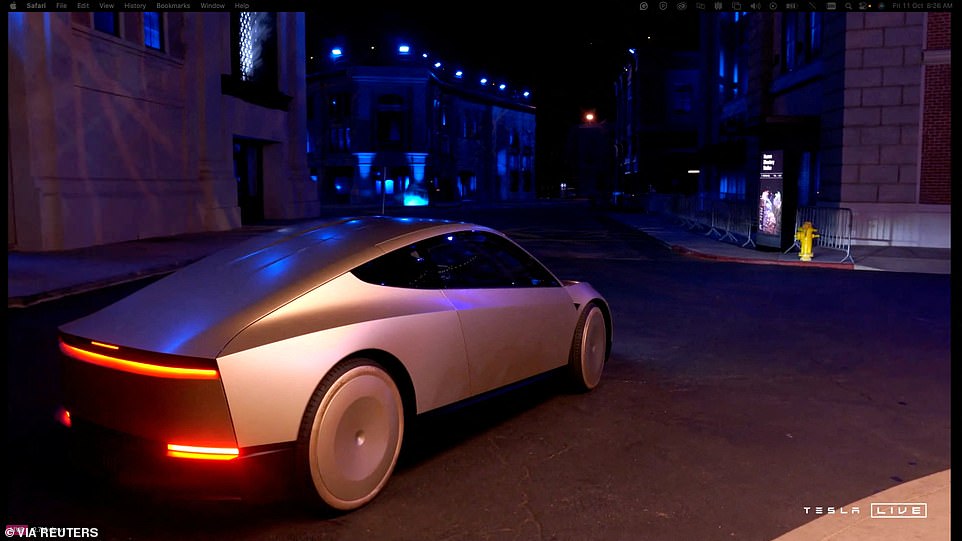On the path to autonomous vehicles, Tesla CEO Elon Musk has been known to stretch the truth.
The name for Tesla’s software, “full self-driving” — or, FSD — is itself a misnomer. The latest promises of autonomous automobile AI are prompting skeptics to roll their eyes.
Also: Tesla cuts its ‘full self-driving’ subscription in half
On Thursday evening, at the fabled Warner Bros. Studio soundstage in Hollywood., Musk rode down the fake streets in a self-driving “robotaxi,” a product he says will become available “before 2027.” The vehicle has neither a steering wheel nor pedals, and Musk sat in the front passenger seat.
The “Cybercab,” as Musk called the vehicle, will allow a new level of autonomy via artificial intelligence (AI). A video showed people reading in the front seat, hands off the wheel, and undertaking a variety of other activities — including reading, watching movies, and even sleeping — as the car continued to pilot itself without their assistance.
Also: The journey to fully autonomous AI agents and the venture capitalists funding them
To prepare the market for the robotaxi, some of which may be owned by individuals, said Musk, he plans to seed the market next year with an update to FSD, called “unsupervised” FSD — an advance, he said, on the current “supervised” FSD.
“Well before that, you will experience a robotic taxi,” said Musk via the Model 3 and Model Y program, and Model S and X. The 3 and Y will achieve unsupervised full self-driving, with permission, whenever regulators essentially approve it in the US and then outside the US — and Cybertruck, too.”
Initially, Tesla intends to offer unsupervised FSD in California and Texas, said Musk, if regulators give permission.
Also: Six levels of autonomous work: How AI augments, then replaces
While Musk’s terminology was vague, unsupervised FSD would imply “Level 3” of the US National Highway Traffic Safety Administration’s taxonomy of six different levels of automation, known as “ADAS.”
Level 3 is what the NHTSA calls “conditional automation,” whereby the car’s software “handles all aspects of driving,” while a person is still in the driver’s seat to take over if necessary. Existing FSD in Tesla vehicles is considered Level 2, where a person is responsible for all aspects of driving and is merely assisted by the ADAS system for discrete tasks such as accelerating.
Some Tesla owners have related driving for miles at a time without ever touching the wheel. Still, the designations are important for when regulators decide that it can be shipped, as well as claimed by Tesla and other manufacturers.
Some Wall Street stock analysts who followed the event slammed Musk for a host of details left out of the promise of unsupervised FSD.
“Overall, we found Tesla’s Robotaxi event to be underwhelming and stunningly absent on detail,” wrote Toni Sacconaghi of Bernstein Research. He noted that Musk didn’t talk at all about whether the unsupervised FSD would be backward-compatible with existing FSD shipping in Tesla vehicles. The company also didn’t address the “path toward regulatory approval.”
Also: ChatGPT’s productivity upgrade and your new AI coworkers
“Tesla did not provide verifiable evidence of progress toward L3 [autonomous driving] or quantify the number of robotaxis planned,” wrote John Coleman, a stock analyst with the brokerage firm Jefferies & Co.
Coleman and others raised a particular technical issue as well. Musk and his team claim that the robotaxi will be able to navigate the road with only the use of onboard cameras, a simpler setup than a more common approach known as “sensor fusion.” In sensor fusion, camera data is combined with LiDAR and radar devices to form a more complete picture of the road.
Using only video-based steering can be less reliable for autonomous vehicle navigation than having the aid of LiDAR and radar via the fusion approach.
Also: Where AI avatars are at your service 24/7
“There is no precedent for achieving higher levels of autonomy using a vision-only approach (instead of a sensor-fusion approach),” wrote analyst Coleman.
Musk, however, emphasized the collective data gathered by Tesla vehicles and fed into the company’s driving simulators. With a million Tesla cars on the road, he explained, it’s like a person living a “million lifetimes,” which, he said, will make autonomous driving “20 to 30 times safer” than a human driver.




